Easthampton, New York
By Ingrid Spencer-via:archrecord
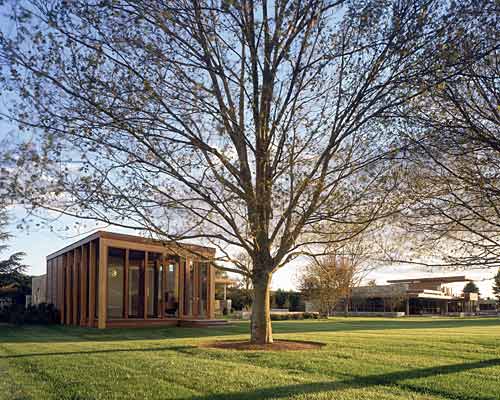
Photo © Paul Warchol
When you’re in the thick of a New York City summer, where, as somebody once said, the asphalt becomes like molten tar and the walls themselves seem to sweat, there’s nothing better than getting away. For one family, a secluded 12-acre site on eastern Long Island set the stage for their ideal retreat from Manhattan’s merciless heat—a compound with three houses, one for the parents and one each for their grown daughter and son. 
Photo © Paul Warchol
The daughter’s house—which the architects, New York City–based Leroy Street Studio, refer to as the House at Further Lane—is the smallest of the three at 1,400 square feet. With its hovering, overlapping roof planes, glass and stone walls, and clerestory windows, it pulls off the challenge of feeling expansive, while, at the same time, protective. 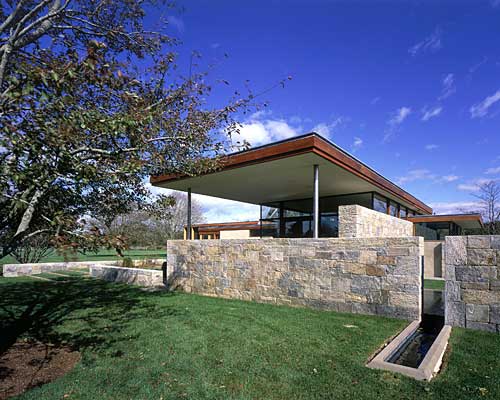
Photo © Paul Warchol
The house’s stone walls reflect those built within the larger landscape of the compound, which were erected to create a series of courts, paths, and edges. Because the site is composed of three lots with an agricultural preserve on the north side, zoning allowed for construction of three houses, but each lot had a limited area on which to build. The challenge for the architects was to design three distinct houses for the individual programmatic needs of its occupants, yet knit them seamlessly together. While the parents’ large house and the daughter’s smaller one have been completed, the son’s is still a work in progress. “We want the three homes to read as one compound,” says Leroy Street Studio partner Morgan Hare. “We’ve accomplished that by building them along a lane we created, and by using a similar palette of materials—ipe, oak, stone, steel—throughout.” 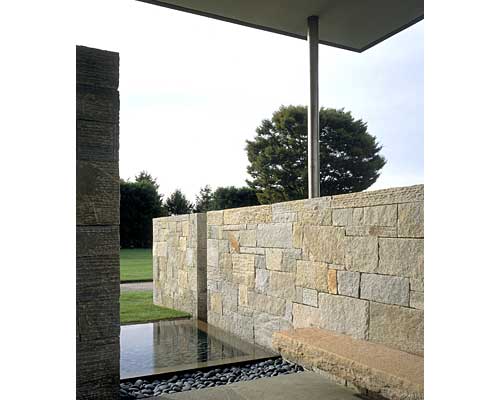
Photo © Paul Warchol
The requirements specified by the client for the House at Further Lane were simple: a house that was low maintenance, with a master bedroom and a guest room, a kitchen for heating up food rather than serious cooking, and a plan that left room for future expansion if needed. The resulting design has a public and private wing, each with its own unique architectural expression. The public wing, sheltered by the stone walls in the home and outside, and the floating roof planes above, is the client’s favorite place in the house. From her living room she can look out to the garden and feel at once safe inside yet able to observe nature. The house is entered at its narrowest point, through a glazed entry hall with bamboo plants just outside which extend up through a square void in the long, low roof plane above. The hallway continues on to the living and dining area and outdoor porch. Once in the living room, the perpendicular roof planes hover above, with clerestory windows and a skylight filling the room with sunlight by day. The kitchen is tucked into a stucco box and the appliances can be hidden in oak-boarded cabinetry. Its end wall (stone-clad on the outside, stucco within) contains a composition of slot windows of various sizes. The living room’s stone wall on the southern elevation follows the upper roof plane out into the landscape, ending in a reflecting pool. 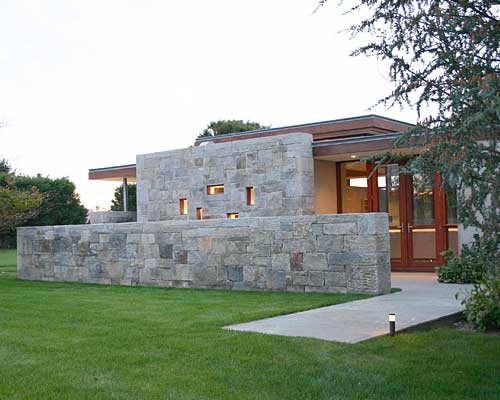
Photo © Paul Warchol
The private wing is more intimate, with the master bedroom cocooned in an oak glu-lam portal frame, and the guest bedroom a stucco box. The two bedrooms share a bathroom between them. The master bedroom claims a screened porch for added space, and the central hall does double duty as a dressing and laundry room. The whole house reflects the low-key, low maintenance attitude of its occupant. Until this particular client needs more space, she says she’s very happy using her parents’ house for the cooking of family meals, and while she enjoys the camaraderie of her parents, and her brother and his kids, she’s content to get back to her intimate house just steps away. “My parents’ house, that’s where all the action is,” she says. “But when I want to escape, or read a book, or just relax, I go home.” 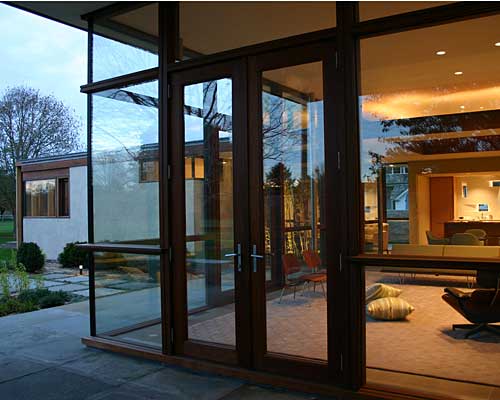
Photo © Paul Warchol

Photo © Paul Warchol
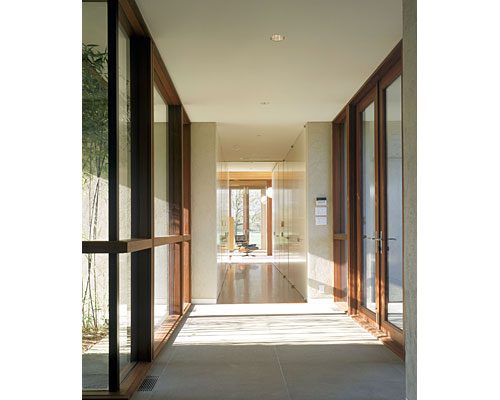
Photo © Paul Warchol

Photo © Paul Warchol

Image courtesy Leroy Street Studio

Image courtesy Leroy Street Studio

Image courtesy Leroy Street Studio